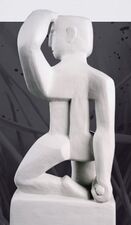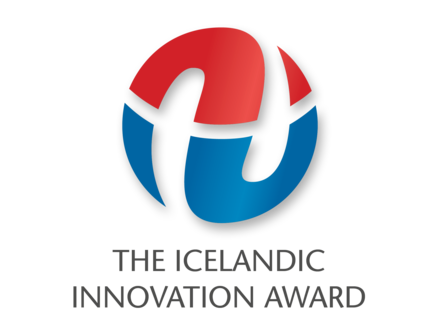The Icelandic Innovation Award
The Icelandic Innovation Award is awarded annually by the Icelandic Centre of Research - RANNIS, Business Iceland, Icelandic Intellectual Property Office and The New Business Venture Fund Kría
The award was first granted in 1994 at the annual Innovation Congress.
The Awards are given to companies that are considered to have excelled in the development of a new products or service, based on research and innovation, and which have achieved success on the market. The purpose of the awards is to draw attention to the important relationship between research, knowledge acquisition and value creation. The prize is a statue of the fertility god Frey by sculptor Hallstein Sigurðsson.
When selecting an award winner, consideration is given to whether a proposed company is a start-up, whether it is based on a new technology and idea and has the knowledge and experience to carry out excellent development work. An assessment is then made of the added value of its products or services and whether the company has been successful in the market. It is assessed whether it is likely that the company will stay the course and whether the management of innovation is exemplary. Finally, it is assessed whether the company represents an incentive for others to follow a similar path.
Information about the Innovation Congress (in Icelandic)
The Icelandic Innovation Award has been Awarded to the following companies:
2025 Hefring Marine2024 Carbfix
2022 Sidekick Health
2021 Lauf Forks
2020 Controlant
2019 Curio
2018 Kerecis
2017 Skaginn (now Skaginn 3X)
2016 Dohop
2015 Zymetech
2014 Meniga
2013 Valka
2012 Primex
2011 Mentor
2010 Nox Medical
2009 Mentis Cura
2008 ORF Genetics
2007 Hafmynd
2006 Star-Oddi
2005 CCP
2004 Lyfjathroun
2003 Altech JHM
2002 Stofnfiskur (now Benchmark Genetics)
2001 Fiskey
2000 Blue Lagoon
1999 Medcare
1998 DeCode Genetics
1997 Hugvit GoPro
1994 Vaki

The award is a statue of Freyr, the Nordic god of fertility and vegetation, by the sculptor Hallsteinn Sigurðsson. He is very interested in Nordic mythology and uses motifs from it in is art.
Writing in the 13th century, Snorri Sturluson includes this description of Freyr in his Edda: "Freyr is the finest of the Æsir. He controls the rain and the light of the sun and consequently the fruits of the earth and can be invoked to secure good harvest and peace."
Freyr was the god of agriculture and fertility, both of men and animals. His cult seems to have been surpassed only by that of Thor.



